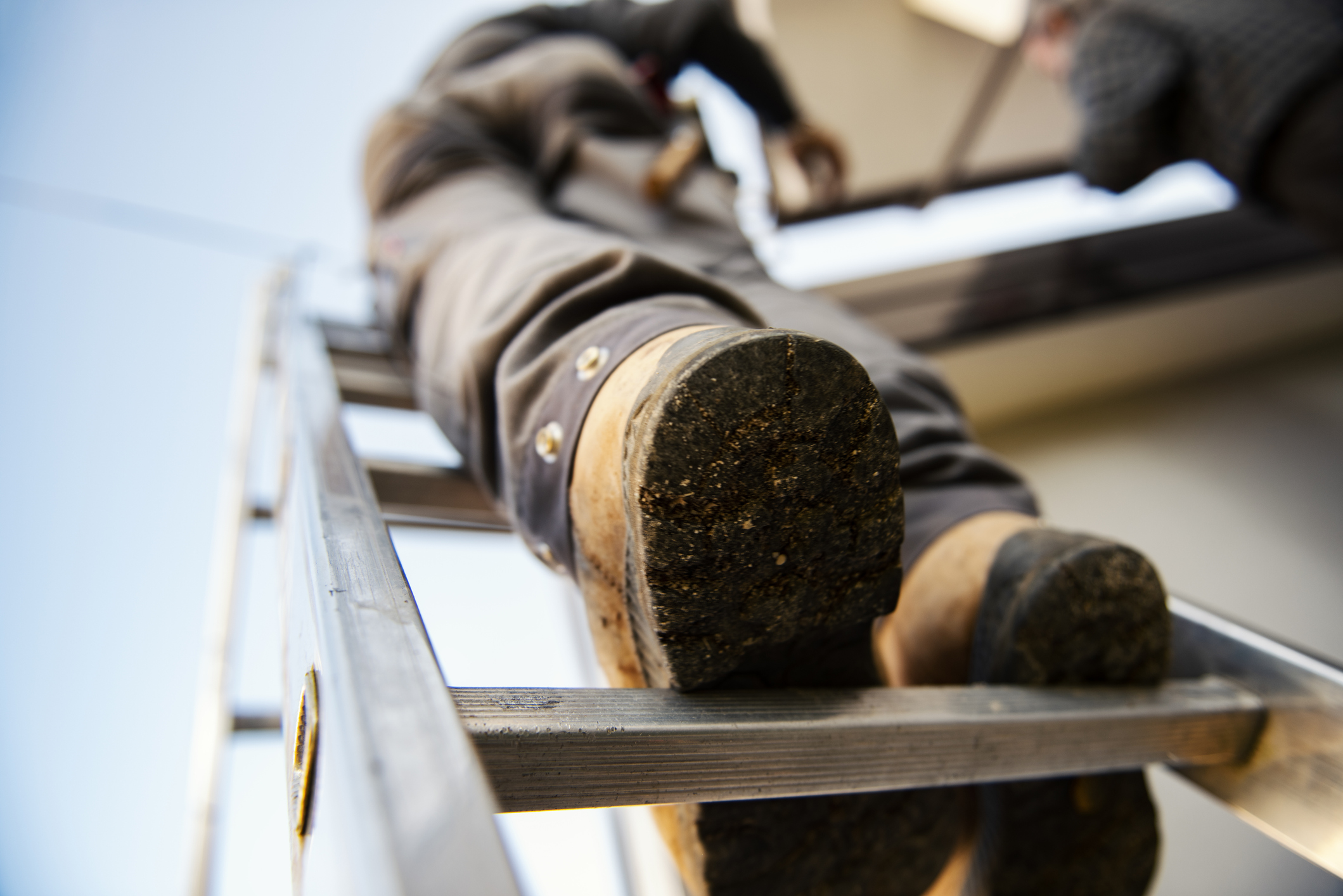Ladder Safety: 16 Tips to Keep Your Workforce Safe
Falls are the leading cause of death in construction and every year falls from ladders make up nearly a third of those deaths. These deaths, as well as serious injuries, can be prevented by making sure your employees understand and follow safe work practices.
Ladders can be found at every job site, from construction sites to manufacturing plants, and they are even quite handy at home for many projects like painting or changing a lightbulb. But ladders can be dangerous if not used properly or when we don’t use the correct ladder for the job.
Some Surprising Facts About Ladder Injuries
- According to the Bureau of Labor Statistics, 50% of all ladder-related accidents were due to individuals carrying items as they climbed.
- Over the last 10 years, the number of ladder-related injuries has increased by 50%.
- Elevated falls make up almost 700 occupational deaths each year.
- Ladder-related injuries account for more than 90,000 ER visits every year.
- Fractures are the most common type of ladder-related injury.
The Occupational Safety and Health Administration (OSHA) believes 100% of all ladder accidents could be prevented if proper attention to equipment and climber training were provided.
OSHA’s Rules on Ladder Use
OSHA Says: “Working on and around stairways and ladders is hazardous. Stairways and ladders are major sources of injuries and fatalities among construction workers for example, and many of the injuries are serious enough to require time off the job. OSHA rules apply to all stairways and ladders used in construction, alteration, repair, painting, decorating and demolition of worksites covered by OSHA’s construction safety and health standards.” (Source)
The OSHA general industry requirements for ladder use are covered under 1910.23 – Walking-working Surfaces: Ladders. The regulation covers the structural requirements and usage restrictions for various types of ladders. It also includes guidelines on ladder setup and usage. 16 Tips For Staying Safe On Ladders
Before Use
- Read and follow all labels/markings and instructions on the ladder.
- Choose the right style, height, material, and performance (duty) rating required for the job.
- Inspect the ladder before each use. If the ladder is damaged, it must be removed from service and tagged until repaired or discarded.
- Only use ladders and appropriate accessories (ladder levelers, jacks, or hooks) for their designed purposes.
- Ladders must be free of any slippery materials like oil or paint, on the rungs, steps, and feet.
Setting Up
- The proper angle for setting up a ladder is to place its base a quarter of the working length of the ladder from the wall or other vertical surface.
- An extension or straight ladder used to access an elevated surface must extend at least 3 feet above the point of support. Do not stand on the three top rungs of a straight, single or extension ladder.
- Use a ladder only on a stable and level surface, unless it has been secured (top or bottom) to prevent movement.
- Be sure that all locks on an extension ladder are properly engaged.
- Avoid electrical hazards by being aware of overhead power lines before handling a ladder. Don’t use a metal ladder near power lines or exposed energized electrical equipment.
- Do not use a step ladder in a partially closed position.
- Do not place a ladder on bricks, wood or other unstable bases to obtain additional height.
- Do not exceed the maximum load rating of a ladder. Be aware of the ladder’s load rating and of the weight it is supporting, including the weight of any tools or equipment.
While Using
- Maintain a 3-point (two hands and a foot, or two feet and a hand) contact on the ladder when climbing it. Keep your body near the middle of the step and always face the ladder while climbing.
- Do not use the top step/rung of a ladder as a step/rung unless it was designed for that purpose.
- Do not move or shift a ladder while a person or equipment is on the ladder.
Tips for Training Your Employees
OSHA regulations require that you train your employees to follow safe ladder use regulations. Employees must know how to choose, inspect, climb, and work from a ladder safely.
Specifically, training should be provided by a qualified person and it should cover:
- The nature of fall hazards and how to recognize them.
- How to minimize fall hazards.
- When and how to use fall protection systems, including inspection and maintenance of those systems.
- The nature of ladder (equipment) hazards, and how to recognize and minimize them.
New employee training should include ladder safety training if ladders are present in the workplace.
Toolbox talks are another great option for keeping ladder safety top of mind for your employees out in the field. Or digital reminders pushed to their phone.
KPA EHS Helps Construction Companies Keep Up with Safety Standards
KPA has the tools and resources to ensure that your worksite is a safe environment for all involved. Manage your safety program in an all-in-one system designed to engage your employees, instill a culture of safety, and enable regulatory compliance. Contact us today, and we can show you how.

